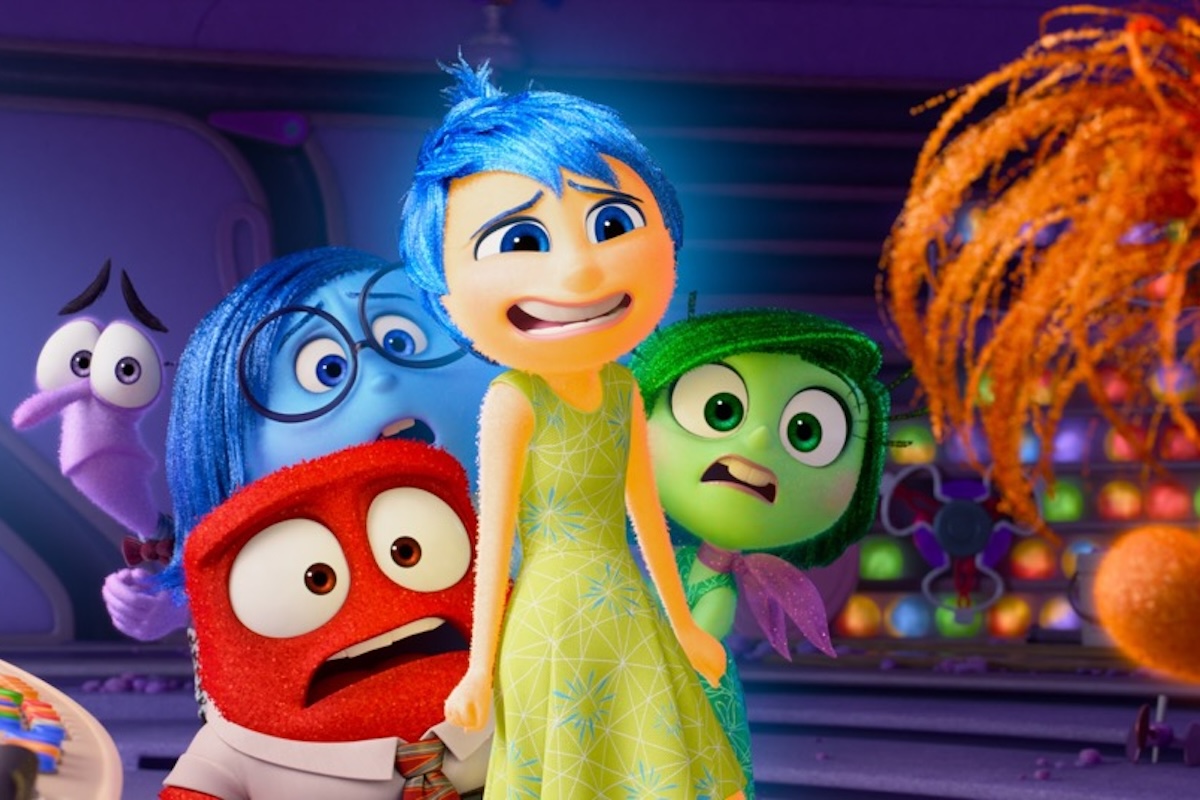Film Review | Adventures with an Emotional Posse
An Ultimately Feel-Good Animated Film, ‘Inside Out 2’ Takes On Teen Life, from an Emotional Command Post

An Ultimately Feel-Good Animated Film, ‘Inside Out 2’ Takes On Teen Life, from an Emotional Command Post

Cinema, at least the conventional narrative kind, has largely been built on the ebb and flow, conflict and resolution rooted in emotional characters. In a delectable and slightly subversive twist, the secretly sophisticated Inside Out 2 is grounded in the conceptual conceit of emotions as actual characters — and vital plot guides at that.
In the guise of an animated summer movie for all ages, and with an ultimately feel-good agenda, this sequel to the acclaimed 2015 film brilliantly taps into aspects of psychology in an anxiety-filled era for young people (and not-so-young), with filmic invention in tow. And yet elements of preaching and teaching don’t get in the way of an altogether good time at the movies, whatever your birth year.
Ostensibly, our protagonist is 13-year-old Riley Anderson, who is bravely crossing that bridge into the P-word, “puberty,” and associated personality change/growth. We follow her path, as an aspiring hockey player torn between the comfort zone of her old friends and prospects of new, hipper social scenes.
But the film’s critical narrative twist involves an off-screen posse of emotions in a command post, controlling Riley’s inner state. Joy, Sadness, Fear, Disgust, and Anger, from the original film, are now joined by a necessary expanding set of emotions — Anxiety, Envy, Embarrassment, and Ennui (a louche, languid TV-watcher), all jockeying for control of their human subject now faced with the “puberty alarm.”

Director Kelsey Mann and a cast of voices including Amy Poehler (as Joy), Maya Hawke, Liza Lapira, and Kyle MacLachlan fare beautifully in the delicate task of creating a vivid and engaging human story from a fantastical premise. We’re drawn into both the “real” world and the underground forces of big-eyed cartoony emotion-tweakers and savor the dualistic story playground while relating to the alternately chaotic and resolving forces of the characters’ psyche. In short, the film’s balancing act triumphs.
As summer segues into a new school year, with its new complex of tensions and issues, the film manages to zoom in on a collective zeitgeist extending beyond the Pixar universe, and into the realm of therapy. A prominent article in last Sunday’s New York Times, with the headline “How Inside Out and its Sequel Changed Therapy,” addressed an unusual phenomenon for a film — the popularity of which is reflected by the $1.5 billion worldwide office receipts, to date.
The article states, “the story of the moods steering the ‘control panel’ in the head of a girl named Riley has been transformational, many experts said, in day-to-day treatment, in schools and even at home, where the films have given parents a new perspective on how to manage the turmoil of growing up….
“Like Mister Rogers, Sesame Street and Daniel Tiger’s Neighborhood, it offers a common reference point for families. And the new movie’s focus on anxiety, which has reached crisis proportions among adolescents, normalizes experiences that for young people could seem isolating or overwhelming, and makes them relatable.”
In other words, Inside Out and its sequel do not fit neatly in the old caveat as being “only a movie.”
Please note this login is to submit events or press releases. Use this page here to login for your Independent subscription
Not a member? Sign up here.
You must be logged in to post a comment.